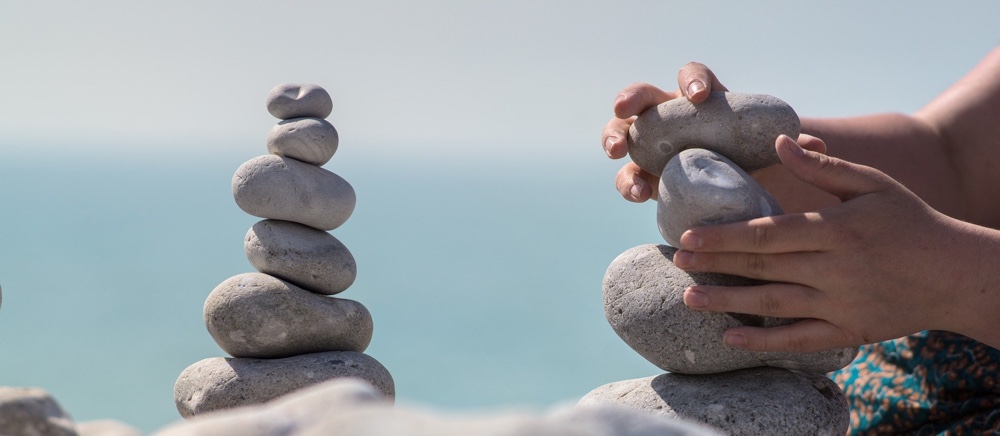2 Meditation Exercises

These 2 meditation exercises will help you deal with the obstacles right from the beginning as you learn how to meditate.
Doing this is crucial as it keeps you on a learning curve where you are experiencing the benefits and changes from your practice and are motivated to practice on a regular basis.
Practicing on a regular basis is the secret to learning meditation.
These 2 meditation exercises and points will guide you to the heart of the matter on how to hold your focus in meditation.
Prepare Your Self
The more you prepare yourself for your meditation, you will notice it will start to pay off in your meditation work.
Imagine
yourself being a painter and your job is to paint a house. In
preparation you think through what tools and supplies you need for the
job, your clean the house, your prep the walls etc.etc. A painter can
tell you, the more prepared he is the faster and better he gets the job
done. The same is true for meditation. The more prepared and focused you
are at the start of your meditation the more you will gain benefit from
your meditation.
Preparing
yourself for meditation can be many different things like; preparing a
quiet and beautiful space, preparing your mind, focusing on your intent
for the meditation during the day. If you like to learn these meditation exercises please read the 7 steps to best prepare yourself for meditation.
How Long do I need to Meditate for?
There is no correct answer really to this question. Any moment you go within and meditate is one moment closer to gaining the benefits of meditation. So even if you have only 5 minutes, you can still nurture yourself with meditation.
Most of us usually go through an initial restless period in the first part of our meditations when our bodies are fidgeting and our minds are the busiest. If this happens and you start to become discouraged you can try using the following meditation exercises: The time plan approach.
Meditation Exercises #1
As best you can, when you’re meditating
- try to determine if you have an average time for going through a restlessness period.
- Then, take that time and double it.
That is a good basic way to approach finding an adequate time period for you to practice your meditations.
For example; if for one week you notice that when you sit down you can’t settle down for approximately 5 to 15 minutes. Then your average meditation time could be somewhere between 10 to 30 minutes.
The idea is to make sure that you give yourself the best chance to feel some advancement in learning how to go within. It helps your overall level of self confidence in being able to go within if you feel at least a portion of the time you’re not just sitting there, wanting to stop, and trying not to want to stop.
"If you have not succeeded ever, yet, on an inward journey, be gentle
with yourself.
Give yourself time. Gently let yourself go deeper.
Whatever experience comes to you, let it take you over.
Welcome it. Relish it.”
The Best Way to Start Any Meditation
There are a great many reasons to meditate. Practically speaking, you could say that there’s a kind of range that begins with the desire to use meditation strictly as a relaxation technique, and goes all the way to the desire for enlightenment. It helps a person to be in touch with what their particular reason is, not necessarily one that matches what they’ve read or that they believe they are supposed to have as a reason to meditate.
Spiritual desire is to meditation what the sun is to human life: we need the sun to keep our life forces going, and we need spiritual desire to sustain our focus and endeavors in each second of meditation. Everything stems from your spiritual desire. You do not have to see it as “spiritual desire” if that does not resonate with you. You can see it as your motivation, your intention, or your drive to improve and evolve. Whatever you call it, this kind of desire is a feeling within, and is what sustains your focus as you meditate.
In the following meditation exercises you will learn how to focus in on your spiritual desire.
Meditation Exercises #2
Part 1
The first part of this meditation exercise is for you to get in touch with what your reason is for wanting to meditate. What is motivating you to read these words about meditation?
Write it down in one sentence.
Below are examples of particular reasons why people feel pulled to go
within. You may have a reason that does not fit into the words used
in these examples. Make your own sentence.
As simple as this exercise is, it’s also one of the most important meditation exercises that exists that will make more sense as you begin your meditation practice.
Examples of reasons to meditate;
- I want to feel something...
- I want to know something...
- I want to see something...
- I want to hear something...
- I want to realize something...
- I want to get freer from...
- I want to be clearer about...
- I want to learn something...
- I want to let go of...
- I need an “aha” about something...
- I don’t know why, except that I just want something more...
- I want to leave behind the world of chain reactions of thinking and doing, ... to get relief from the chaos of input...
- I want to know what is real, what is true, and what is not...
- I want to stick my toes into the unknown...
- I want to have my deeper soul part touched and moved by God...
Part 2
Now, add a prayerful element to the sentence that you wrote. For
example; “I’m meditating because I need an ‘aha’ about something.” The
prayerful element part could then be something like; ... “and I’m going
to trust that there is assistance out there somewhere that can help me.”
That’s all, just make your statement something simple and honest.
This
is a very personal statement of your desire and of the trust that you
are willing to give to your practice. Later on you’ll use this statement
as a seed for growing into more understanding about how to practice
holding a prayerful focus and letting go, which are essentially the core
parts of most meditation practices.
“You need to listen while you are meditating,
but it is a listening beyond the senses of the body.
It is a listening to the sound of silence.
Your mind will not hear it; your ears will not hear it.
It is a listening that is beyond these limitations.
It is a state of reception.
Carry this state of reception into your meditations;
and as this listening takes
over, the usual difficulties will subside."
The
few minutes and the focus it takes to write your sentence helps you to
have a state of reception as Gourasana described in the passage above.
Your desire, your trust–the unique way that you feel it and say it–put
you in touch with your humility and receptivity. This bit of awareness
of intent and the reminder to have a measure of trust will be the core
of every meditation that you do.
Your
desire and your trust are to your meditation what salt and pepper are
to a table setting – because they go with everything. Which ever method
of going within you use you will always be contributing your desire and
your trust, and they will be a part of everything you experience in
meditation.
Suggestion:
Sit once a day for one week, and do nothing but simply feel in touch with the sentence that you wrote. Each time you go within write a new sentence down, and then just sit with no other intention going on other than to be in touch with what you wrote in your sentence.
Your desire and your trust are to your meditation what salt and pepper are to a table setting – because they go with everything.
Which ever method of going within you use you will always be contributing your desire and your trust, and they will be a part of everything you experience in meditation.


